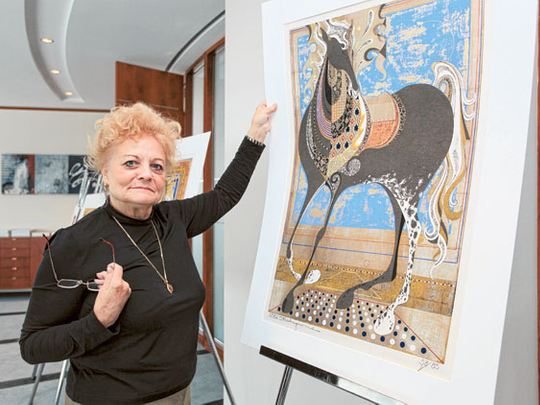
Dubai: Art pieces by one of Japan’s leading woodblock print artists, Tadashi Nakayama, have been brought to the shores of Dubai for the first time in a three-day private preview at the Emirates Tower Hotel.
The 14 pieces, which are being exhibited in the Middle East for the first time, revolve around the highly figurative and elegant depiction of horses using the Japanese woodblock print technique.
The exhibition opened on September 16 and concludes on September 18.
Dubbed as one of the last great techniques of the art world, the Japanese woodblock print is an ancient art form which was first used in the 8th century in printing religious texts. It involves using wooden blocks made from cherry blossom trees to transfer ink or colour to mulberry paper.
“It [woodblock print] has been done by other artists through the ages but it’s the Japanese who have brought it to the highest level of perfection because they had the patience to spend hours and hours designing, transferring the image to the woodblock, carving the block, and printing it print by print,” Kappy Hendricks, owner of The Hendricks Art Collection from the US, told Gulf News.
Nakayama, 85, has made 242 woodblock prints during his professional career which spans 54 years.
The last one called ‘Colourfully Decorated Ema’ was made in 2009.
The elaborate designs were made on mulberry paper, which he himself produced.
His dedication to the artwork is manifested through the complexity of the designs — the layering, the rich colours and texture, plus the addition of the 24-karat gold-and-silver leaf. His works feature subjects such as butterflies, a girl’s profile, flowers and horses.
“His work is very very labour-intensive, all hand-done, no machine work at all, and very very detailed,” Hendricks said. “We know that the people in this region love horses and this is a different kind of representation of horses.”
Nakayama’s work was influenced by Italian artist Paolo Uccello and Persian miniatures that he saw during his travels to Europe way back in the 1960s.











